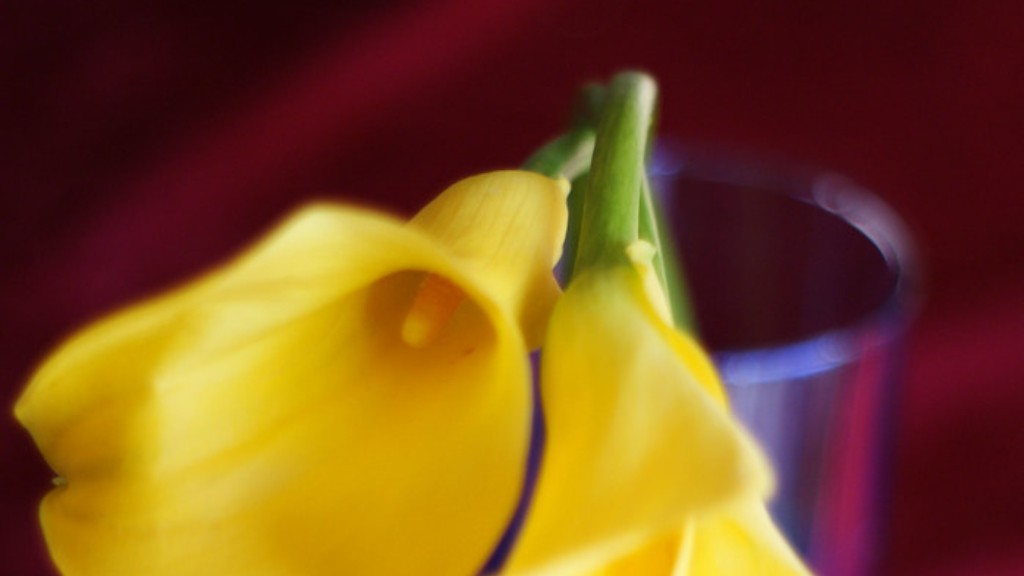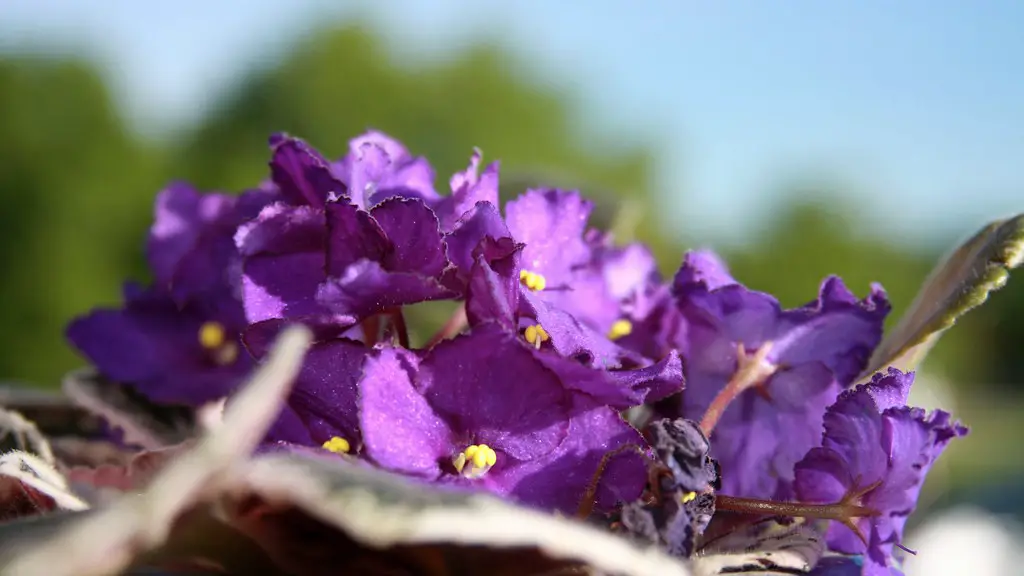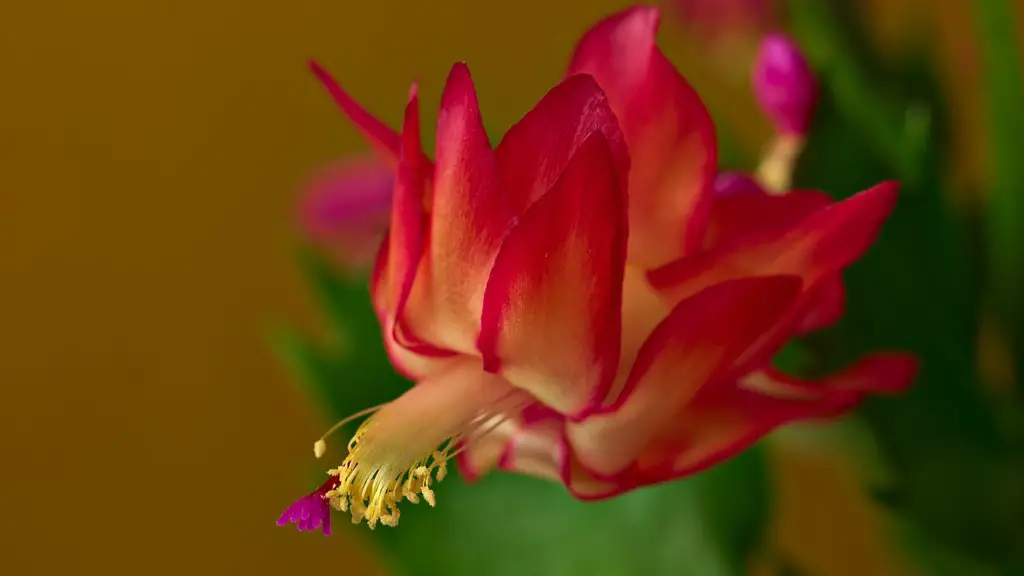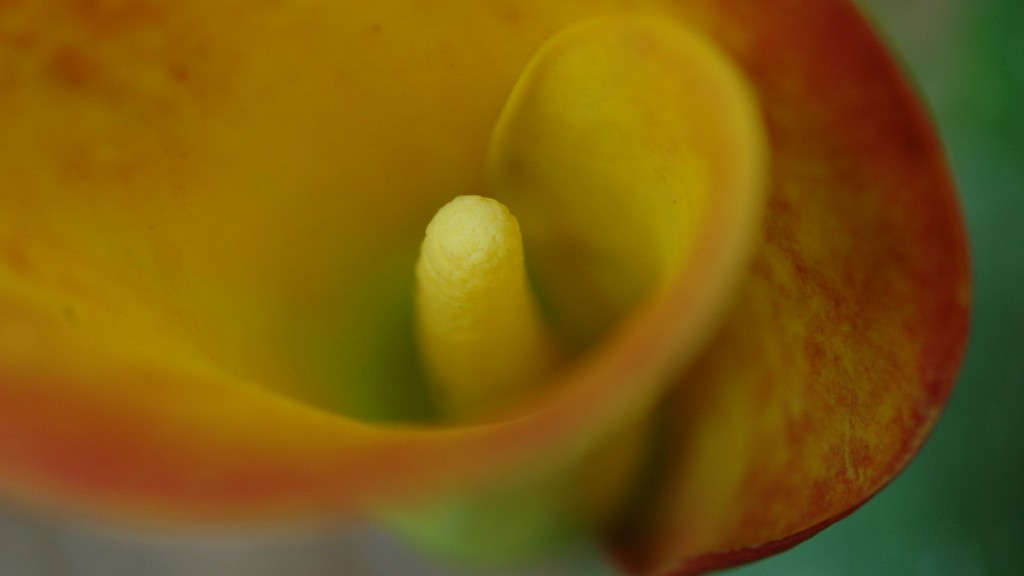Watering African violets can be a bit of a challenge because they are a delicate plant. The best way to water them is to use a self-watering pot or to water them from the bottom up.
The best way to water African violets is to use lukewarm water and to water from the bottom.
Should African violets be watered from the bottom?
African violets are usually pretty easy to care for and can be watered from the top or bottom. It’s important not to use cold water, though, as they prefer lukewarm or warm water instead. If you water from the top, be careful not to get water on the leaves when the plant is in the sun; this is to avoid leaf spots.
It is important to water your plant regularly to keep the soil moist and encourage blooming. However, you should also allow the soil around the roots to dry out between watering to prevent the plant from becoming waterlogged. The best way to water your plant is from the bottom, using room temperature water. Place the plastic grower’s pot in a shallow dish of water and allow the plant to absorb the water for no more than 30 minutes.
How often should you water African violets from the bottom
To prevent over-watering, your African violet houseplant takes up water through the bottom of the first pot. Keep an eye on the bottom piece and refill as your plant depletes the water (usually every two to three weeks).
To avoid crown rot, do not mist the foliage of your African violet. Water on the foliage may cause permanent leaf spotting. Use water that is room temperature and make sure the crown (the section of the plant at soil level) is not saturated with water.
Can I water African violets with tap water?
It’s important to be aware of the quality of your tap water when you’re watering your African violets. Chlorine levels can fluctuate depending on the season, and in some areas the water may have high levels of chlorine, chloramines, or dissolved solids. These things can all adversely affect your plants, so it’s best to use filtered or distilled water if possible.
To clean African Violet leaves, fill a spray bottle with room temperature or tepid water. Spray the leaves with water and clean the leaves using your fingers, rubbing the top and bottom part of the leaves. You can also use the spray bottle method to clean the African Violet leaves with liquid soap.
Can you water African violets with ice cubes?
It’s best to avoid using ice cubes to water your African violets. The cold water can damage the plants and cause them to discolorate. Stick with room temperature water instead.
If you want your plants to have the best color and blooms, grow them in bright, indirect light. The ideal location for a plant stand is three feet away from a west- or south-facing window. Plants will still grow when situated right beside north- or east-facing windows, but leaves will be thin and spindly, and plants less likely to bloom.
How can I encourage my African violet to bloom
The most common reason African violets don’t bloom is because they aren’t getting enough light. African violets need indirect sunlight, direct can burn the leaves. Choose a north- or east- facing window for best results. Keep plants away from cold glass and rotate the pot once a week so all leaves receive light.
If you want to water your African violet and make sure it is happy, then you need to let the water sit for a bit. This means that you should let the water sit for 24-48 hours so that it is at room temperature or tepid. If you can’t do this, then at least let the water stand for an hour before giving it to your plant.
What do Overwatered African violets look like?
If your African Violet plant has been over-watered, the soil will retain too much water. This retention of water will cause the leaves and /or leaf stems to turn soft, limp or mushy.
When watering African violets, be sure to not wet the leaves as they are prone to rot. Water from below, using a self-watering pot or a watering can with a long spout. Allow the water to soak up through the drainage holes in the pot. Water until the soil is saturated and the water begins to drain out the bottom of the pot.
How often do you feed African violets
Fertilizing your African Violet is important to keep the plant healthy throughout the year. During the spring and summer, you should fertilize the plant once every 14 days. However, in the fall and winter, you should not fertilize the plant at all to prevent over-fertilizing.
African violets need shallow, breathable pots. Their roots don’t go very deep, so they like to go sideways. Make sure your pot has suitable drainage holes so you can water from underneath. You can also get African violet-specific pots that have a terra cotta sleeve you plant in and a water reservoir.
What pots are best for African violets?
When it comes to choosing the best pot for African violets, there are a few things you need to take into account. First of all, the pot needs to have drainage holes to allow excess water to escape. Secondly, it needs to be the right size for the plant – too large and the roots will struggle, too small and the plant will become pot-bound.
Here are our picks for the best pots for African violets:
1. Mkono 3 Pack Self Watering Plastic Planter
These plastic self-watering pots are a great option for African violets. They have drainage holes to allow excess water to escape, and the self-watering feature means you won’t have to worry about over- or under-watering your plants.
2. Ceramic Pot with Saucer
This ceramic pot is a good option for African violets. It has a drainage hole in the bottom, and the saucer catches any excess water.
3. Blue Self Watering Ceramic Planter
This blue self-watering ceramic planter is a great option for African violets. It has a drainage hole to allow excess water to escape, and the self-water
It’s true that coffee can be used to lower the pH of soil and make it more acidic, which is why it’s often used as an ingredient in products specifically designed to do just that. However, it’s important to keep in mind that coffee is a relatively weak acid, so it might not be practical to use it on its own to make significant changes to your soil’s pH. In any case, it’s worth considering if you have plants that prefer more acidic conditions and you’re looking for an easy and inexpensive way to make your soil a little more hospitable for them.
Conclusion
The best way to water African violets is to use lukewarm water and to water from the bottom.
From our research, we have concluded that the best way to water African violets is by using a watering can with a long, thin spout. By watering the soil around the plant, rather than directly on the leaves, you will avoid getting water on the leaves, which can cause them to rot.





